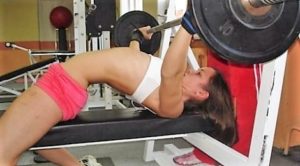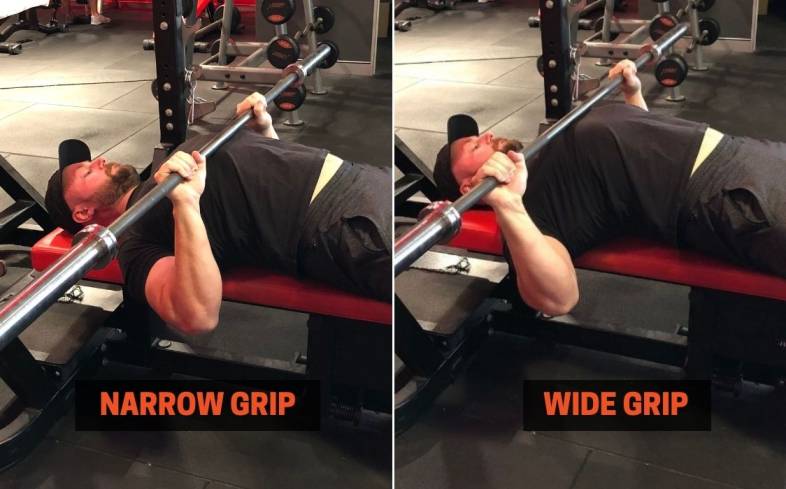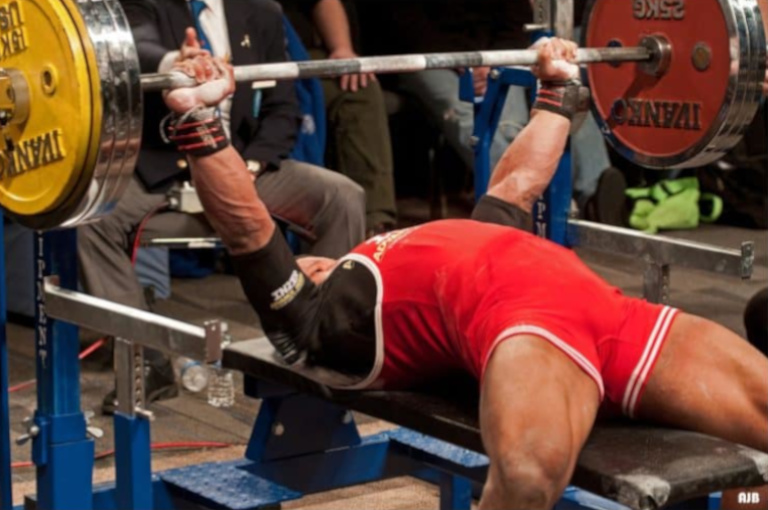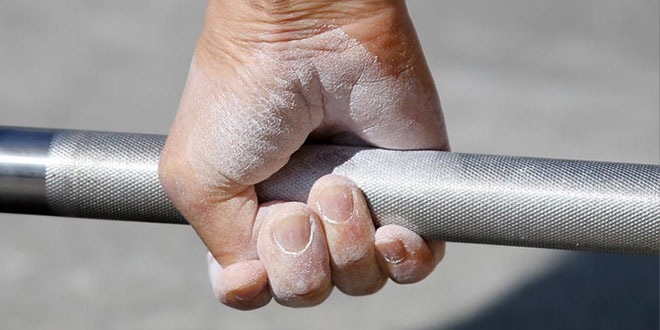The bench press is the ultimate bro exercise, and it’s pretty much the one barbell movement most gymgoers are familiar with. While the squat ranks up there as well, squats are typically neither as popular nor as well-liked as the bench press. However, outside of powerlifting and bodybuilding circles, a lot of people have pretty terrible bench-pressing form.
In a way, it’s meant to be an incredibly simple and straightforward movement, yet as the weight goes up and as the stress on the joints increases, it becomes easy to stall out on a low weight or rack up terrible injuries due to improper form.
A good, well-prepped bench press is an amazing chest-builder and lets world record holders press hundreds of kilos off their chest. A bad bench press might impress a couple of bros, but will ruin your shoulders, mess with your wrists, and present a greater risk of a pec tear.
My Bench Press Background
I personally picked up the bench press for the first time when I began exploring barbell training and weightlifting in general, as any young grasshopper looking to get a little stronger. I started out with Stronglifts 5 x 5, and used Mehdi’s guide for a solid few months, until life threw a wrench into my general lifting plans.
While my actual performance was pitiful, it also took me years to actually get comfortable on the bench. Bench pressing has always been incredibly awkward to me, and it wasn’t until maybe about a year ago that I started to find a consistent form that really worked for me. I still play around with a few things here and there, but I know enough about benching that I generally know what I should and shouldn’t do when I hit the bench and press the bar.
Some people are built to bench, and others are built to press in general. My pressing has never been naturally strong, even though it’s on par with my other lifts proportionally-speaking. I’m a much bigger fan of rowing and have always pulled more weight than I could press (not that much more, mind you).
Horizontal rows are a lot of fun to me, be they dumbbell rows, heavy barbell rows, Woolam/deadlift rows, cheat rows, Pendley rows, or just straight up weighted pullups. Helps that pulling more actually helps you press, while I’d argue overdoing your pressing isn’t really going to have any carryover to the back.
Even when done properly, however, the bench press is far from my favorite upper body exercise. I consider it to be the most worthless exercise among the big three, and one of the less “useful” upper body exercises, in the sense that it has perhaps some of the least carryover to other things. Deadlifts, squats, and even overhead pressing all provide you with a ton of strength in all directions. Rows and pulls are unbelievably valuable.
But the horizontal push? Not that interesting. There aren’t actually that many cases where we’re better off pushing obscene amounts of weight, versus pulling or using our legs. Anything from fighting to working on a farm mostly consists of having a strong back and strong legs. Strong arms just sort of happen as a result, and I personally don’t find the bench press very interesting in terms of building “overall strength”. But it’s a part of the sport, so I train it. And you should too, of course.
The Bench Press Prep
The prep for a bench press is actually quite complex. Since I don’t generally use any lifting gear when training, I won’t go over the differences of lifting in gear and out of gear, and won’t go on about lifting shirts, slingshots, wrist wraps, or any of that. I will mention that squat shoes – that is, Olympic weightlifting shoes with a raised heel – can be useful if you can’t get your heels to touch the floor during the press. Some federations require lifters to keep their heels on the floor when bench pressing. Others don’t. If you’re not competing or planning on competing, simply do what feels most comfortable in that regard.
Now, onto the actual prep itself. The elements of a solid bench press are:
- A tight back with your scapulae retracted and depressed.
- A good arc, minimizing the distance between the buttocks and the upper back, preferably in a fashion that allows for the chest and upper abs to come up off the bench as far as you can.
- Feet firmly planted into the ground, quads active to press the shoulders and back deeper into the bench. They should be active throughout the lift, which is why friction is important. You can use a yoga mat to make your bench more grippy, so you don’t slide while applying pressure.
- Hands planted firmly on the bar, with the bar, wrists, and forearms in alignment. Elbow placement throughout the range of motion of the lift may vary, depending on pressing styles and cues.
- When you unrack or take a hand-off, you should make sure the bar is positioned above your mouth or nose. You want to minimize the distance the bar has to travel from the rack into starting position. Don’t unrack at the eyes. The unrack itself is best handled with a partner, but if you have to unrack the weight yourself, make sure you don’t protract your shoulders at any point.
- Like other lifts, take a deep breath and hold it before unracking and pressing. Exhale after the press.
That’s about it, basically. I personally prep in a step-by-step fashion:
- Get my feet into position, with my heels raised. I position the balls of my feet at the halfway point of the bench.
- Then, I lay back and press up through my heels, into a glute bridge.
- At this point, I get my grip on the bar and get my shoulders into position. I start by getting into an arch, depressing and retracting my shoulders, and then pressing myself into the bench with both my feet and my hands (on the bar).
- With my butt still raised, I take a deep belly breath and unrack the bar or get a handoff. Once I settle the weight above my chest, I slowly lower my butt until it lightly touches the bench.
- Time to press.
As far as prep goes, I believe prep for the bench press is about as crucial as it gets. If you don’t prep right, you’ll miss your lift almost immediately. Your hips and knees are generally going to drop into the right position when you start a pull or a squat, and while being a little off in your prep in both will cost you some weight, it’s nowhere near as drastic as the bench press.
When pressing, I feel it is absolutely critical to maintain maximum tightness, make sure everything is in its right position, and really consciously bring your chest up to the bar, then press with every fiber of your being – not just your arms or your chest, but with your entire body.
Leg drive, forearms, triceps, chest, abs, back – everything is doing its part to press.
The Push
 Prep is good and all, but what about the push? Just like how the squat, deadlift and overhead press each require the right cues programmed into your mind to get you to lift big weight, you need to focus and consciously mind the way you pull and push your weight for a proper bench press. Here are the two general rules I employ when I bench:
Prep is good and all, but what about the push? Just like how the squat, deadlift and overhead press each require the right cues programmed into your mind to get you to lift big weight, you need to focus and consciously mind the way you pull and push your weight for a proper bench press. Here are the two general rules I employ when I bench:
- I lower the bar fairly slowly, tucking my elbows slightly just to get the bar to slowly lower onto my chest. The bar tends to lay just under my nipple line, although that’s going to depend highly on your proportions and benching style.
- Once the bar is on the chest, I take a second. Note that I don’t say that I relax for a second. I just take a second. A competition bench press is typically paused, which means that judges have to see you keep the bar on your body just long enough to ensure that there isn’t any bouncing happening. I remain as tight as I can be, storing the stretch as best I can and keeping my quads engaged the entire time.
- Finally, I press. I initiate the press in two ways: one, I push through my heels. My quads are already engaged, but this is just to take it up a notch. Two, I flare my elbows and push as hard as I can off the chest. Speed is key, so being explosive out of the bottom is important. The sticking point in the bench press tends to be halfway up for everyone, so being fast off the chest can help push past that.
Finding the Right Hand Placement
Hand placement is difficult to recommend in the bench press. There are arguments that a wider grip is better because it reduces range of motion, while a narrower grip provides a stronger push. The right answer is that you need to play around with your hand placement to find the right grip for you.
I trained with shitty, slippery barbells for a long time, necessitating a narrower grip because going wide just meant slipping with heavy weight, causing my wrists to suffer an undue amount of stress. Now that I bench with a decent barbell, I use the ring marks on the barbell as a reference point for where I should place my ring finger. You can experiment with a variety of grips.
 I can’t really tell you what’s best. The best grip depends on your shoulder width (biacromial width), arm length, forearm to upper arm length, and of course, what you’re personally most comfortable with. Having really wide shoulders means having the potential for a much bigger, wider chest, which means a stronger chest muscle and a bigger push. Try bench pressing with a wide grip, a relatively narrow grip, and a few variations in-between, and see how each feels.
I can’t really tell you what’s best. The best grip depends on your shoulder width (biacromial width), arm length, forearm to upper arm length, and of course, what you’re personally most comfortable with. Having really wide shoulders means having the potential for a much bigger, wider chest, which means a stronger chest muscle and a bigger push. Try bench pressing with a wide grip, a relatively narrow grip, and a few variations in-between, and see how each feels.
Finally, on the matter of grip itself.
Let the bar settle into your lower hand, in alignment with your wrist joint. Wrap your fingers around the bar and squeeze. Squeezing throughout the lift makes a difference as it activates the stabilizing muscles in your forearms much better, giving you a smoother descent and press.
You can rotate your hand internally, so the barbell runs from the bottom corner of your palm to the corner of your palm just beneath the index finger. This is called the bulldog grip and can also be used to decrease range of motion, decrease injury rates in the wrist, and improve your push by giving you more flaring in the elbows.
Some people also opt for a “suicide grip”, which is a regular overhand grip without the thumb. I find this needlessly dangerous and actually pretty uncomfortable, but some argue that it allows you to create a wider, more stable shelf in your hand for the barbell to rest right atop your wrists.
Useful Bench Press Variations
I go into depth for a ton of useful pressing variations here. Take your pick and have fun. I’d say the two most useful presses any powerlifter should be incorporating into their training are the close grip bench press and the Spoto press.
The close grip bench press is a bench press with your hands at shoulder width. The focus is on pumping your triceps. Sets of 8-12 do the trick, although you can go heavy for these as well. The Spoto press is a paused bench press, but with the bar an inch above the chest during each rep, making you stronger in the middle part of the press.
Want to lift heavier and avoid injuries? 💪🔥
Download our FREE '5-Minute Warm-Up Routine for Maximum Lifting Performance' and get primed for every workout!
Click below to grab your copy now!👇
👉 Download the Free Guide




